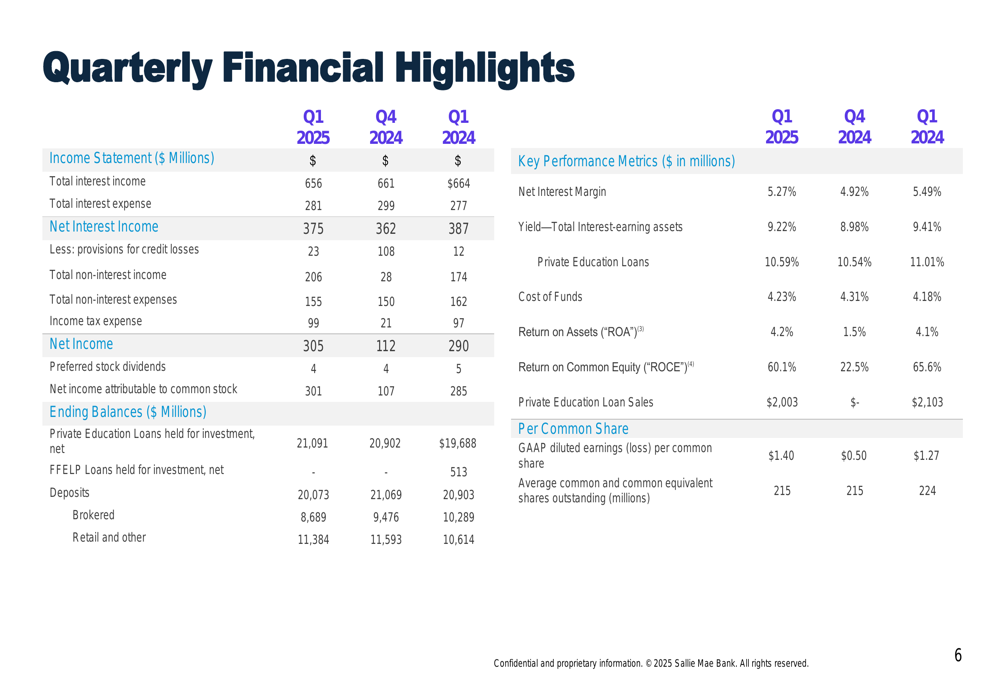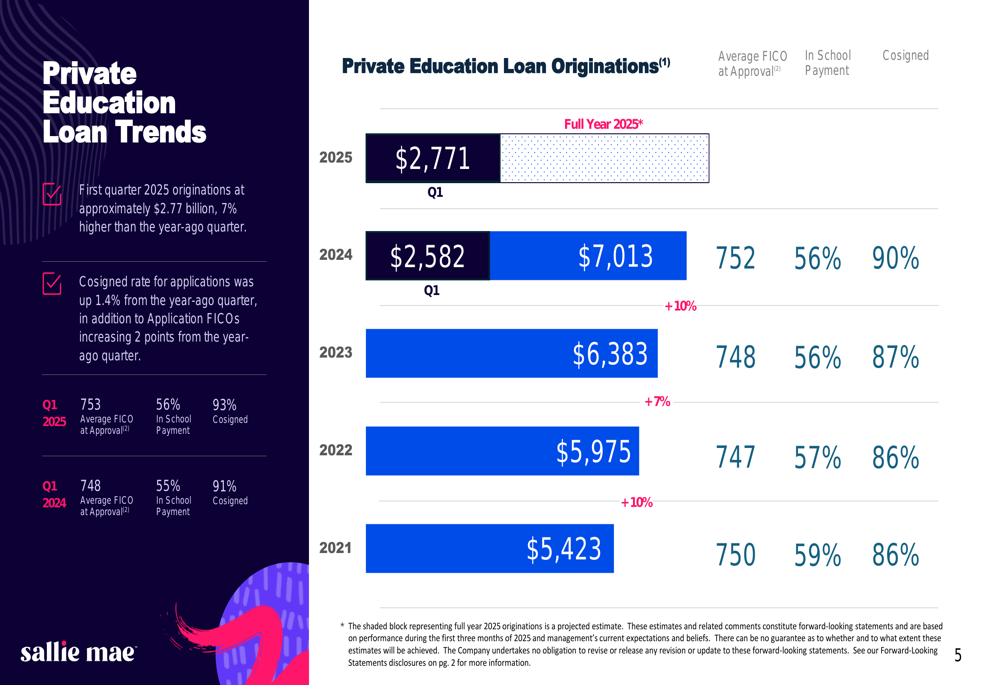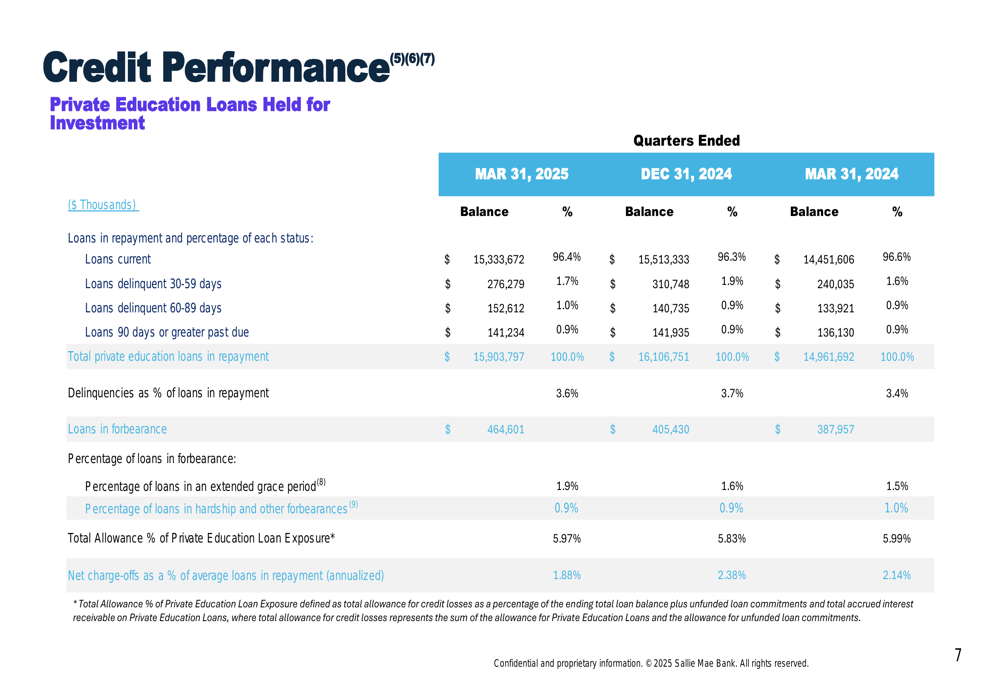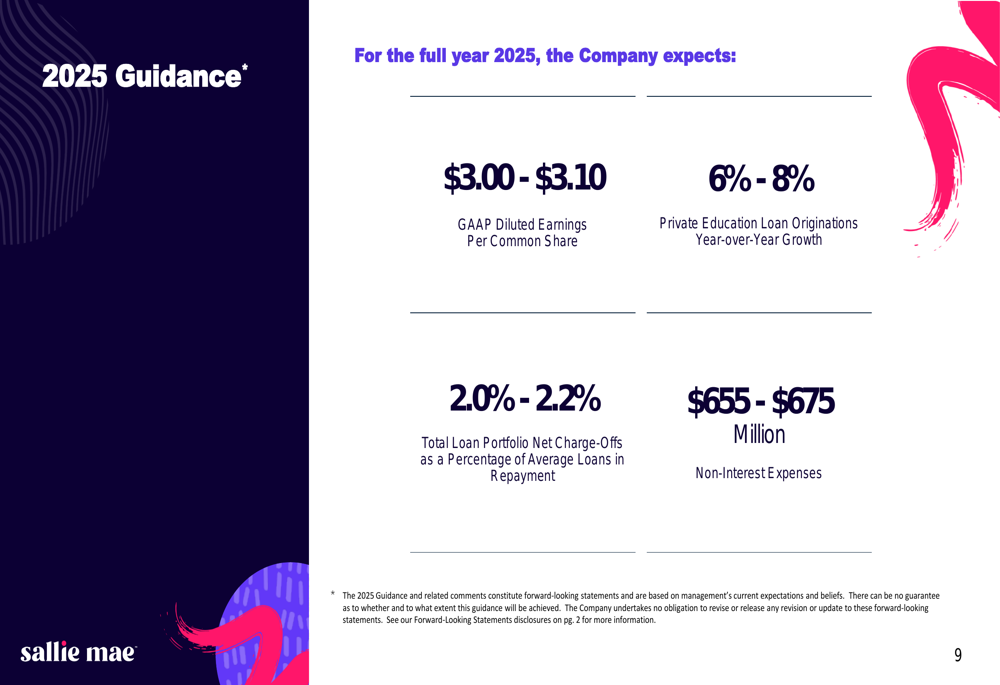U.S. futures subdued as government shutdown stretches into second week
Introduction & Market Context
SLM Corporation (NASDAQ:SLM), commonly known as Sallie Mae, presented its first quarter 2025 earnings results on April 24, 2025, showcasing solid performance in its core private education loan business. The company’s stock responded positively, closing up 3.69% at $27.15 on the day of the announcement, with after-hours trading showing an additional 1.28% gain to $28.50.
The student loan provider demonstrated resilience in a competitive financial services landscape, with growth in loan originations and strong returns despite a slight compression in net interest margin. The company’s focus on high-quality borrowers and disciplined capital management continues to be central to its strategy.
Quarterly Performance Highlights
Sallie Mae reported GAAP net income of $301 million attributable to common stock for Q1 2025, translating to diluted earnings per share of $1.40. The company achieved an impressive 60% return on common equity during the quarter, reflecting efficient capital utilization and strong core business performance.
Private education loan originations reached $2.8 billion in Q1 2025, representing a 7.3% increase compared to the $2.6 billion originated in the same period last year. This growth demonstrates the company’s continued strength in its primary market.
As shown in the following quarterly financial highlights:

The company’s net interest margin was 5.27% for Q1 2025, down 22 basis points from Q1 2024, reflecting the challenging interest rate environment. Despite this compression, Sallie Mae maintained strong profitability through disciplined expense management, with total non-interest expenses decreasing to $155 million in Q1 2025 compared to $162 million in the year-ago quarter.
A significant contributor to quarterly earnings was a $188 million gain on loan sales, representing an increase of $45 million from Q1 2024. The company sold $2.0 billion in private education loans to an unaffiliated third party during the quarter.
Loan Portfolio and Credit Performance
Sallie Mae’s private education loan portfolio continues to demonstrate solid credit quality. The company maintains a focus on high-quality borrowers, with an average FICO score at approval of 753 for Q1 2025 originations, up from 748 in the year-ago period. Additionally, 93% of loans were cosigned, an increase from 91% in Q1 2024.
The following slide illustrates the consistent improvement in loan quality metrics over recent years:

Credit performance metrics showed some stability, with private education loan net charge-offs of $76 million for Q1 2025, representing 1.9% of average loans in repayment (annualized), an improvement from 2.1% in Q1 2024. The percentage of private education loans delinquent 30+ days was 3.6% as of March 31, 2025.
The detailed credit performance metrics reveal the company’s loan portfolio health:

The provision for credit losses was $23 million in Q1 2025, impacted by new loan commitments and partially offset by a $116 million release of provision from the loan sale. The total allowance as a percentage of private education loan exposure remained stable at 5.97%, compared to 5.99% at the end of Q1 2024.
Capital Management and Shareholder Returns
Sallie Mae continued its commitment to returning capital to shareholders during the quarter. The company paid a common stock dividend of $0.13 per share in Q1 2025 and repurchased 1.0 million shares at an average price of $29.65 per share under its 2024 share repurchase program. As of March 31, 2025, $372 million in capacity remained under the repurchase program authorization.
The company’s capital position remains strong, with a total risk-based capital ratio of 12.9% and a CET1 capital ratio of 11.6% at quarter-end. These metrics provide Sallie Mae with flexibility to continue executing its capital allocation strategy while maintaining regulatory compliance.
The first quarter highlights demonstrate the company’s balanced approach to growth and shareholder returns:

On the funding side, deposit portfolio balances at the end of Q1 2025 were 4% lower than at the end of Q1 2024. The Q1 2025 mix of brokered versus retail and other deposits was approximately 43% and 57%, respectively. Notably, uninsured deposits as a percentage of total deposits were just 3% as of March 31, 2025, reflecting a conservative funding approach.
2025 Outlook and Guidance
Looking ahead, Sallie Mae provided guidance for the full year 2025, projecting GAAP diluted earnings per common share of $3.00 to $3.10. The company expects private education loan originations to grow by 6% to 8% year-over-year, continuing the positive momentum seen in Q1.
The company’s full-year guidance is outlined in the following slide:

Management anticipates total loan portfolio net charge-offs as a percentage of average loans in repayment to be between 2.0% and 2.2% for 2025, slightly higher than the 1.9% reported in Q1 2025. Non-interest expenses are projected to be in the range of $655 million to $675 million for the full year.
The guidance reflects management’s confidence in Sallie Mae’s business model and its ability to navigate the current economic environment while continuing to deliver value to shareholders. With the stock trading near $28.50 in after-hours trading, well above its 52-week low of $19.39 but still below its 52-week high of $32.65, there appears to be room for potential appreciation if the company executes on its 2025 guidance.
Full presentation:
This article was generated with the support of AI and reviewed by an editor. For more information see our T&C.
